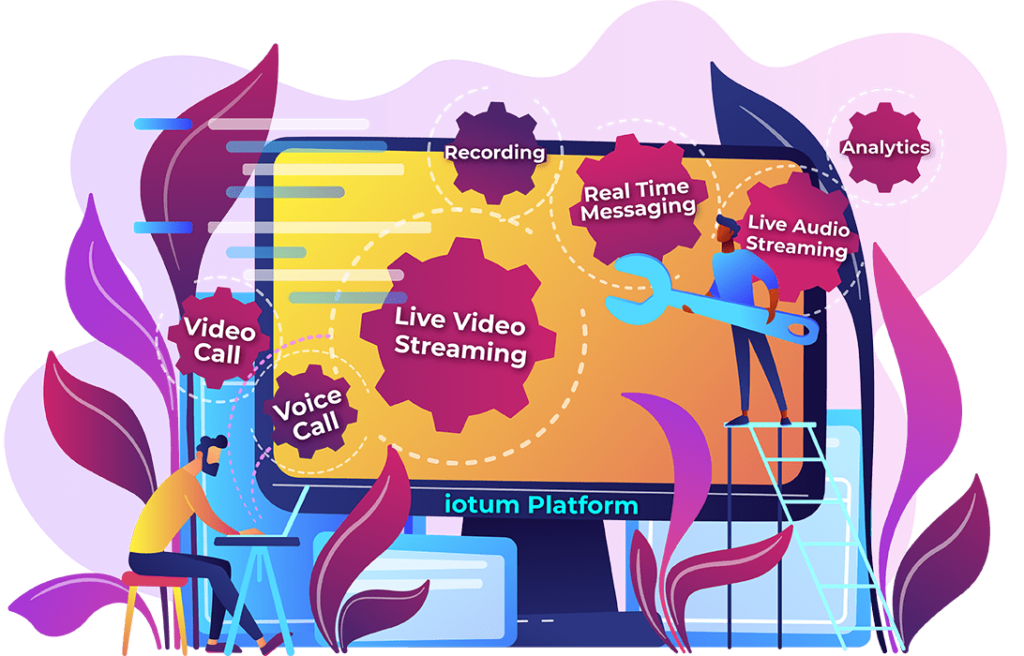 Getting any job done right requires the right tools of the trade including the best free video conferencing! If you work remotely (or work in an office), for example, there are a few things you can’t live without (besides coffee) like a computer or mobile device. Maybe you prefer working from a desk or with a mouse for interacting on your computer more easily. A desk chair, headphones, perhaps a microphone – all tangible tools that drive productivity.
Getting any job done right requires the right tools of the trade including the best free video conferencing! If you work remotely (or work in an office), for example, there are a few things you can’t live without (besides coffee) like a computer or mobile device. Maybe you prefer working from a desk or with a mouse for interacting on your computer more easily. A desk chair, headphones, perhaps a microphone – all tangible tools that drive productivity.
But what about the intangible things, the other items that streamline and enforce how work gets done? Things like free video conferencing and a solid internet connection?
To get good work done, you need both hardware and software. Let’s take a closer look at the intangible items you need for a next-level working environment.
What Are The Basic Internet Requirements For Video Conferencing?
 So you’ve got your tangible at-home or office essentials, but to be fully set up and running, you want to ensure you’ve got the right internet package. Nothing is more frustrating than a spotty, slow-moving internet connection.
So you’ve got your tangible at-home or office essentials, but to be fully set up and running, you want to ensure you’ve got the right internet package. Nothing is more frustrating than a spotty, slow-moving internet connection.
Here’s a quick rundown highlighting some of the speed factors that will help you get the most out of your meetings:
Download Speed:
Determines how well your video connection is received from other participants on the call.
Upload Speed:
Determines how well your connection can send your video stream to others.
Latency:
Affects how well your connections synchronize with each other (high latency causes distortion and lag). The lower the latency the better.
Nowadays, most video conferencing technology doesn’t require high-end complicated speeds and connections. The speeds necessary just aren’t very high and if you’re working from home, many household connections can manage with minimum requirements. There are a few things to consider:
- How many people are on the one connection?
- What applications do you use for work?
- Do you handle a lot of large files and media?
If your internet speeds aren’t fast enough you might have to do a little troubleshooting. First, run an internet speed test on the devices you rely on the most. This will help you figure out if the speeds you’re paying for matches with what you’re actually getting!
Another hack – Sometimes it’s as simple as repositioning your Wi-Fi router or powering it up or off. Also, consider connecting your device with an Ethernet cable for a direct connection to the internet.
How Much Bandwidth Is Needed For Video Conferencing?
 In broad strokes, bandwidth is the high rate of data being downloaded from the internet to your computer. Bandwidth is about capacity not speed. The larger it is, the more data can be pulled down.
In broad strokes, bandwidth is the high rate of data being downloaded from the internet to your computer. Bandwidth is about capacity not speed. The larger it is, the more data can be pulled down.
How much bandwidth do you need? Bandwidth is measured in bits per second and 1 byte equals 8 bits so 1 megabyte (MB) equals 8 megabits. Therefore 1 megabit-per-second connection would take 8 seconds to download 1 Mb file. Mbps gauge internet speeds and refer to the amount of data transferred per second.
The minimum bandwidth required for video conferencing that’s effective is 8Mbps for downloading and 1.5 Mbps for uploading. If downloading and uploading items seem to take too long or you feel like it’s lagging, consider upgrading your package.
When it comes to video conferencing bandwidth requirements, there are a few factors that can have an effect on the input and output of video:
- What kind of web camera is being used? Take a look at the model and make for specificities.
- What is the resolution setting of the camera?
- What is the FPS (frames per second) setting of the camera?
- How many active cameras are being used in the meeting?
- How many active cameras are on the same network?
- How many active users are currently on the same network?
- How many features are simultaneously being used (screen sharing, whiteboard, etc)?
Typically, the maximum bandwidth of sending and receiving video are around the following:
- For high definition video: Receive 2.5 Mbps and Send 3.0 Mbps
- For high-quality video: Receive 1.0 Mbps and Send 1.5 Mbps
- For standard quality video: Receive 0.5 Mbps and Send 0.5 Mbps
What’s the internet speed for video conferencing?
The internet speed needed for video conferencing should be as high as you can go to ensure a smooth experience. So approximately how many Mbps do you need? General surfing, email checking, and gaming require around 1 Mbps. Video streaming on the other hand (like watching a streaming service such as Netflix) eats up more, so a 3 Mbps connection is recommended.
According to highspeedinternet, working from home requires around 10 Mbps of download speed and 1 Mbps of upload speed – for each person. The minimum speed for video conferencing is 1 Mbps but depending on who you’re sharing the connection with, opting for something a little higher like 3 Mbps is advisable.
In short, bigger is better when it comes to a reliable internet connection. Acquiring the best you can afford will always stand you in good stead. With FreeConference.com, you can enjoy free video-conferencing technology for a stand-out connection. Feel confident during your next online meeting with the best free video conferencing app (available on Android and iPhone) that takes care of your online business.


